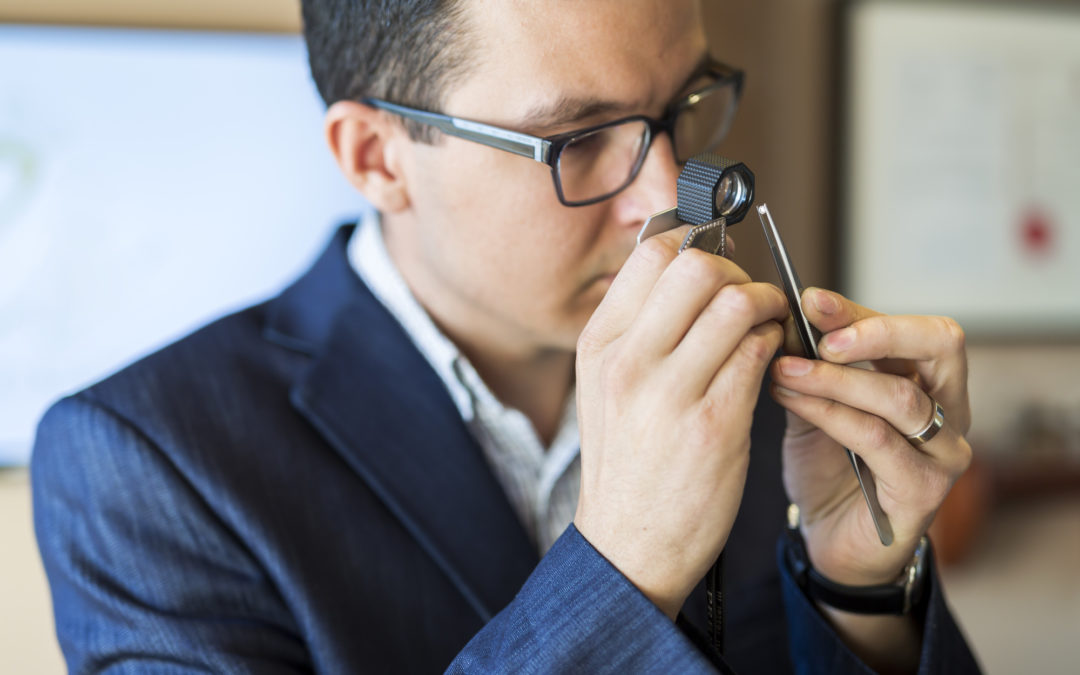With their permanent residency on most wrists, fingers, and ears, you cross paths with dozens of diamonds each day. To the naked eye, each stone probably looked identical to the next—they all sparkle and shine, right? So how do you determine the real from the fake?
Thankfully, this is possible all thanks to the handy diamond tester. They can spot a fake diamond as easily as you breathe. But how does such a revolutionary product work and when should you use one?
If you would like to know the answer to these questions and many others, all you need to do is keep on reading. Everything you need to know is right below.
What Is a Diamond Tester?
Essentially, diamond testers are tools that determine the authenticity of your diamond. This is done through the detection of heat in the gem. Diamonds generate and process heat in a way that is unique to them; the tester uses this feature to determine the status of the piece.
Diamond testing devices will know your diamond is real if heat moves through it at a diamond-like rate. In other words, if the heat conducts faster or slower than usual, the tested stone is not a real diamond. Instead, it is glass or another common diamond simulant.
This can also be done by measuring electricity, but heat is a more common method. Your tester will show the status of the diamond by reaching the red sections of the LED bar. If it only reaches a green or yellow color, you have a fake diamond instead.
When to Use a Diamond Testing Device?
Before purchasing your diamond, buyers and jewelers will want to know if the item is real or fake. This is why you will more than likely be met with one of these devices when selling used watches, rings, etc.). This reason is one of the most common uses for this device.
Jewelers will test the diamonds and offer you an estimate based on condition, size, age, and other various factors. If you want to check the status of a diamond on your own, you can purchase a diamond tester and do it yourself. This will save you a trip to the jeweler with a false diamond.
A personal diamond tester will also prove itself handy when purchasing your own used diamonds or watches. These devices are small and easy to carry from store to store. This feature allows you to take your tester to pawn shops, estate sales, or any other diamond buys.
In other words, it will protect you from dishonest business practices and user error.
Common Diamond Simulants
If your diamond isn’t what it appears to be, what exactly is it? Believe it or not, there are many diamond simulants ranging from man-made products to natural materials. Even though some duplicates have more flaws than strengths, a few of them are good quality and effective diamond replicants.
In fact, you probably have a few in your jewelry collection and don’t even know it.
Cubic Zirconia
Cubic Zirconia is the most popular diamond dupe on the market. This material can be fashioned into a diamond-like piece of jewelry and sold at a much cheaper and quicker rate. This material is so malleable, it is often made to mimic many variations of gems.
Its price is a great selling point for this simulant, but the quality of Cubic Zirconia just doesn’t measure up to the real thing.
Moissanite
Moissanite is known to cut glass and is much more hardy than the previous simulant. This quality makes it more expensive than other replica diamond materials, but still cheaper than genuine diamonds. Its hardiness has also given the material a market of its own that is popular among individuals looking for a high-quality diamond substitute.
There are even testers designed for testing for moissanite. They work in a very similar way to traditional diamond testers and are used both personally and professionally.
White Sapphire
Another hardy diamond replicant is White Sapphire. This material is a natural mineral that appears to be a less shiny or bright diamond. It is similar enough to fool common eyes, but will not give you the pop of a traditional diamond.
Its only true advantage is its strength and price.
Glass
As shocking as it sounds, glass is a common and extremely cheap diamond substitute. Their price may be an appealing point to some buyers, but it has many flaws to note. Some of them include increased fragility and lack of iconic diamond shine.
Purchasing Authentic Diamonds
If you’re in the market for a genuine diamond, or diamond duplicate, try your best to purchase from professional jewelers. Their products are professionally tested, checked, and guaranteed, ensuring your newest diamond is 100 percent real. They can also help you find items in your budget and a great diamond substitute; like Moissanite.
Here, you will be able to buy both individual gems (for personal pieces such as watches) and premade items. Overall, the experience will be safer, more efficient, and more effective than a business with unprofessional jewelers or pawn shops.
Find Genuine Jewelry
If you are looking for a diamond tester or genuine gems for a personal piece, check out C.R. Time Company. We have been a reliable source of supplies and tools for jewelers and watchmakers for over 30 years. Your jewelry needs will be safe with us.
Explore our website to learn more about our products, services, legacy, or search our catalog.

